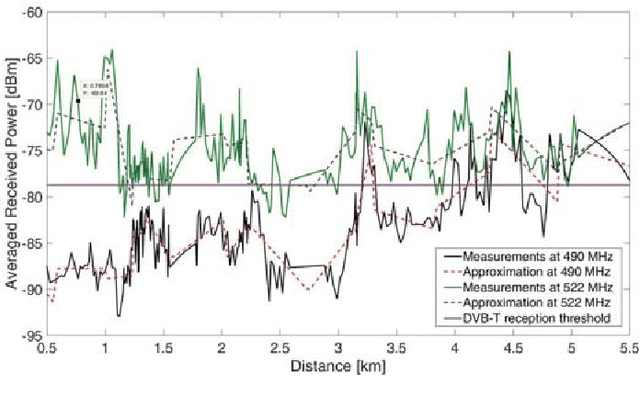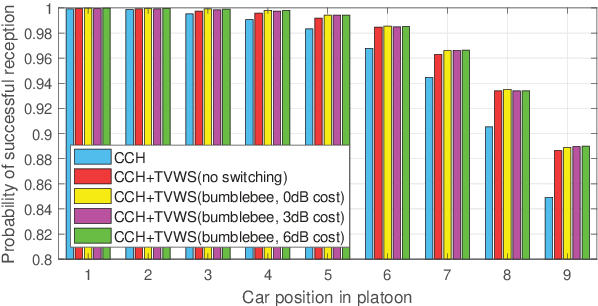Alexander Wyglinski
Improving Internet Traffic Matrix Prediction via Time Series Clustering
Sep 18, 2025Abstract:We present a novel framework that leverages time series clustering to improve internet traffic matrix (TM) prediction using deep learning (DL) models. Traffic flows within a TM often exhibit diverse temporal behaviors, which can hinder prediction accuracy when training a single model across all flows. To address this, we propose two clustering strategies, source clustering and histogram clustering, that group flows with similar temporal patterns prior to model training. Clustering creates more homogeneous data subsets, enabling models to capture underlying patterns more effectively and generalize better than global prediction approaches that fit a single model to the entire TM. Compared to existing TM prediction methods, our method reduces RMSE by up to 92\% for Abilene and 75\% for G\'EANT. In routing scenarios, our clustered predictions also reduce maximum link utilization (MLU) bias by 18\% and 21\%, respectively, demonstrating the practical benefits of clustering when TMs are used for network optimization.
Distributed Vehicular Dynamic Spectrum Access for Platooning Environments
Mar 22, 2022



Abstract:In this paper, we propose a distributed Vehicular Dynamic Spectrum Access (VDSA) framework for vehicles operating in platoon formations. Given the potential for significant congestion in licensed frequency bands for vehicular applications such as 5.9 GHz. Our approach proposes to offload part of the intra-platoon data traffic to spectral white-spaces in order to enhance vehicular connectivity in support of on-road operations. To enable VDSA, a Bumblebee-based decision making process is employed which is based on the behavioral models of animals, is employed to provide a means of distributed transmission band selection. Simulation results show the distributed VDSA framework improves the leader packets reception ratio by 5%, thus indicating its potential to increase in reliability of intra-platoon communications.
 Add to Chrome
Add to Chrome Add to Firefox
Add to Firefox Add to Edge
Add to Edge